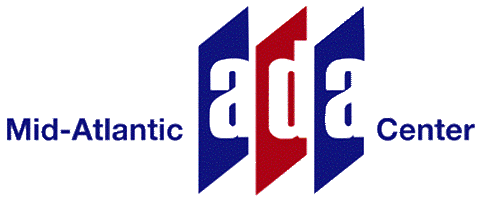(Printer-friendly PDF version | 176 KB)
(Large-print PDF | 210 KB)
(Spanish version)
The ADA requires public entities (state and local governments) and private entities (businesses and nonprofit organizations that serve the public) to provide auxiliary aids and services to make sure that individuals with speech, hearing and vision disabilities can understand what is said or written and can communicate effectively. The goal is to ensure that communication with people with disabilities is as effective as communication with people without disabilities.
Effective communication rules also apply to companions (such as family members or friends) who have disabilities.
Auxiliary aids and services
Auxiliary aids and services are ways to communicate with people who have communication disabilities. (See the Department of Justice's Effective Communication webpage for more details.)
The type of auxiliary aid or service necessary to ensure effective communication depends on:
- The method of communication used by the individual;
- the nature, length, and difficulty of the communication taking place; and
- the complexity of what is being communicated.
Auxiliary aids and services must be provided in accessible formats, in a timely manner, and in a way that protects the privacy and independence of the individual with a disability. A public entity or private business cannot impose a surcharge on an individual with a disability to cover the costs of the auxiliary aid or service provided.
Examples of common auxiliary aids and services include:
- qualified sign language interpreters in person or through video remote interpreting (VRI) services
- note takers or exchange of written notes
- real-time computer-aided transcription services
- written materials
- telephone handset amplifiers
- assistive listening devices and systems
- telephones compatible with hearing aids
- closed caption decoders
- open and closed captioning, including real-time captioning
- voice, text, and video-based telecommunications products and systems, including text telephones (TTYs), videophones, and captioned telephones or equally effective telecommunications devices
- videotext displays
- qualified readers
- taped texts
- audio recordings
- Brailled materials and displays
- screen reader software
- magnification software
- optical readers
- secondary auditory programs (SAP)
- large print materials
- accessible electronic and information technology
Public entities must use the aid or service that the individual with a disability requests unless an equally effective means is available or it would impose an undue burden. A private business should ask individuals with disabilities what communication method they prefer, but may choose a different method as long as it results in effective communication.
A public entity or private business must pay for the auxiliary aid or service unless it can demonstrate that it would be an undue financial burden. In that case, the entity must provide a different auxiliary aid or service to provide effective communication.
Sign Language Interpreters
Public entities and private businesses cannot require an individual with a disability to bring someone to interpret for him or her. They also cannot rely on an adult accompanying an individual to interpret or facilitate communication except:
- In an emergency involving imminent threat to the safety or welfare of an individual or the public where there is no interpreter available; or
- When the individual with a disability specifically requests that the accompanying adult interpret or facilitate communication, the accompanying adult agrees to provide such assistance, and relying on that adult is appropriate under the circumstances.
A private business should not rely on a minor child to interpret or facilitate communication, except in an emergency involving an imminent threat to the safety or welfare of an individual or the public where there is no interpreter available.
Public entities and private businesses can use video remote interpreting (VRI) services to connect with an off-site interpreter for real-time sign language interpretation. If used, VRI must be available at all times.
Telecommunications
Automated-attendant systems (such as voicemail and messaging and directing incoming telephone calls) must be accessible to individuals with communication disabilities, including those using auxiliary aids and services.
An entity must respond to telephone calls from a relay service in the same manner that it responds to other telephone calls. Alternatively, it may use relay services in place of direct telephone communication for receiving or making telephone calls to individuals with disabilities
Entities that provide equipment for patrons to make outgoing telephone call also must provide accessible public telephones, TTYs, or other telecommunications systems for individuals who are deaf, hard of hearing, or have a speech impairment.
|
Content was developed by the Mid-Atlantic ADA Center, and is based on professional consensus of ADA experts and the ADA National Network. |
|
|
TransCen, Inc. |
The contents of this factsheet were developed under grants from the National Institute on Disability, Independent Living, and Rehabilitation Research (NIDILRR grant numbers 90DP0089 and 90DP0086). NIDILRR is a Center within the Administration for Community Living (ACL), Department of Health and Human Services (HHS). The contents of this factsheet do not necessarily represent the policy of NIDILRR, ACL, HHS, and you should not assume endorsement by the Federal Government. |
|
© Copyright 2017 ADA National Network. All Rights Reserved. |
|

.png)





